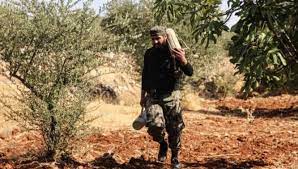The Syrian Network for Human Rights has expressed its approval of the findings detailed in the report by the Organisation for the Prohibition of Chemical Weapons (OPCW) Investigation and Responsibility Team, which substantiates the use of chemical weapons by the Islamic State in Maraa during September 2015.
In a statement, the organization noted, “The fourth report from the Investigation and Identification Team (IIT) of the OPCW, released on Friday, February 23, 2024, aims to ascertain the perpetrators of chemical weapons attacks. Specifically, it investigates the responsibility for the attack in the town of Maraa, Aleppo governorate, on September 1, 2015. Previous investigations by the OPCW had already established the use of chemical weapons on this date and location.”
According to the report, ISIS employed sulfur mustard gas in Maraa between 09:00 and 12:00 (UTC+3), during sustained assaults aimed at capturing the town. The remnants and ammunition found at the attack sites were conventional artillery projectiles, primarily 122 mm caliber. Moreover, 11 individuals exhibited symptoms of mustard gas poisoning.
The report asserts that such an attack in Maraa could only have been authorized by ISIS’s executive authority, the delegated committee, which operates directly under the group’s leadership. The Investigation and Responsibility Team has connected additional organizational structures and individuals to the deployment of chemical weapons by ISIS, including the group’s Diwan al-Jund and the Military Development and Industrialization Committee. Four individuals have been identified as perpetrators, while two others are deemed principal figures in ISIS’ chemical weapons program.
The investigation team’s conclusions were drawn using the standard of proof known as “reasonable grounds,” commonly adopted by international fact-finding bodies and commissions of inquiry. Evidence considered includes information from the fact-finding mission (FFM), reports from States parties, interviews conducted by the independent investigation team, sample analyses, computer models, satellite imagery, frontline maps, documented videos and photographs, and other pertinent data.
This article was translated and edited by The Syrian Observer. The Syrian Observer has not verified the content of this story. Responsibility for the information and views set out in this article lies entirely with the author.


